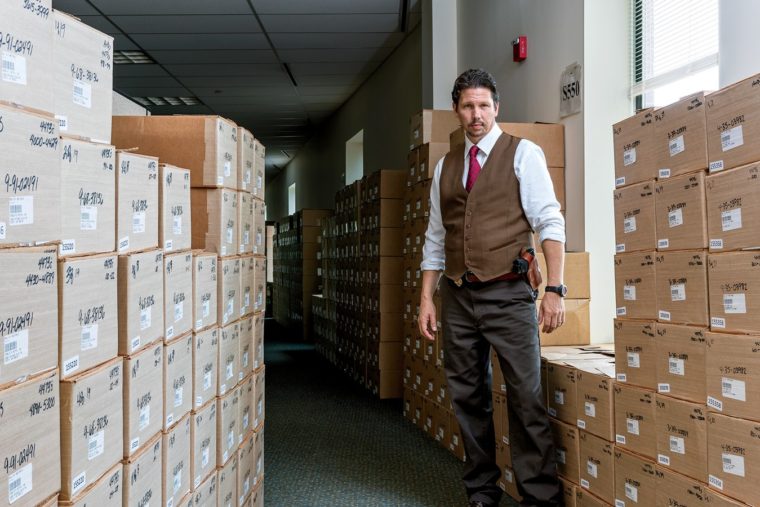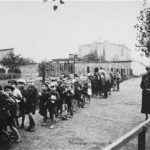Say there’s a murder. Blood everywhere, a dead guy on the floor. The cops come in with their yellow tape, chalk line, the little booties, cameras, swabs, the fingerprint dust. One of them finds a gun on the floor. The gun! He lifts it with his pinkie, examines it, takes note of the serial number. Back at the station, they run a trace on the gun. A name pops up. It’s the wife! Or: It’s the business partner! It’s somebody’s gun, and this is so exciting because now they know who did it.
Except—no. You are watching too much TV. It doesn’t work like that.
“Think,” says Charlie Houser, a federal agent with the ATF. We’re in his office, a corner, and he’s got a whiteboard behind him where he’s splashed diagrams, charts, numbers.
The cops run a trace on a gun? What does that even mean? A name pops up? From where? There’s some master list somewhere? Like, for all the guns all over the world, there’s a master list that started with the No. 1 (when? World War I? Civil War? Russian Revolution? when?), and in the year 2016 we are now up to No. 14 gazillion whatever, and every single one of those serial numbers has a gun owner’s name attached to it on some giant list somewhere (where?), which, thank God, a big computer is keeping track of?
“People don’t think,” Charlie tells me. He’s a trim guy, 51, full lips and a thin goatee, and he likes to wear three-piece suits. They fit loose, so the overall effect is awkward innocence, like an eighth grader headed to his first formal. “ I get e-mails even from police saying, ‘Can you type in the serial number and tell me who the gun is registered to?’ Every week. They think it’s like a VIN number on a car. Even police. Police from everywhere. ‘Hey, can you guys hurry up and type that number in?’ ”
So here’s a news flash, from Charlie: “We ain’t got a registration system. Ain’t nobody registering no damn guns.”
There is no national database of guns. We have no centralized record of who owns all the firearms we so vigorously debate, no hard data regarding how many people own them, how many of them are bought or sold, or how many even exist.
What we have instead is Charlie.
“Can I go smoke a cigarette while we discuss it?”
Anytime a cop in any jurisdiction in America wants to connect a gun to its owner, the request for help ends up here, at the National Tracing Center, in a low, flat, boring building that belies its past as an IRS facility, just off state highway 9 in Martinsburg, West Virginia, in the eastern panhandle of the state, a town of some 17,000 people, a Walmart, a JCPenney, and various dollar stores sucking the life out of a quaint redbrick downtown. On any given day, agents here are running about 1,500 traces; they do about 370,000 a year.
by Jeanne Marie Laskas



